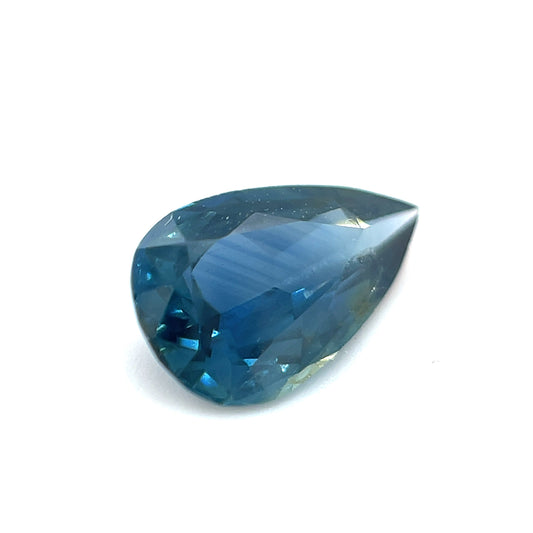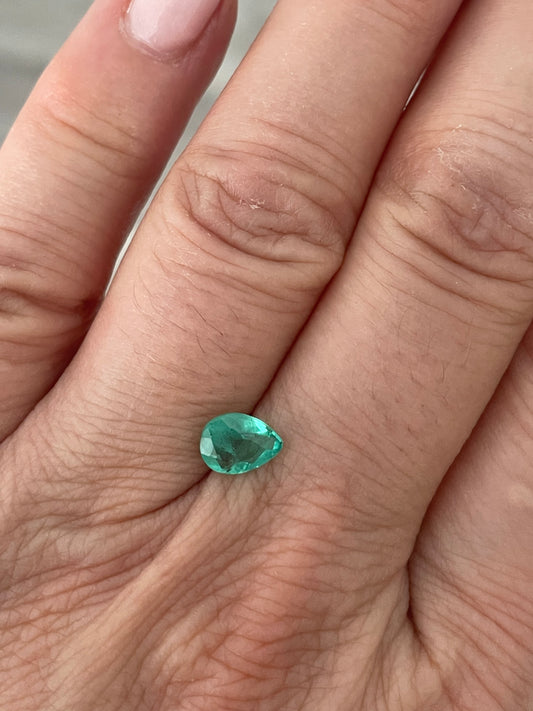Gemstones can be mined in different ways: in conventional, industrial mining or in small-scale mining, which is also called artisanal mining.
In recent decades, the demand for gemstones has increased, which has led to an expansion of both forms - and both can bring great disadvantages for people and the environment. Gems are often mined under inhumane conditions and workers are often paid only a fraction of what they should earn.
In the following, you will learn about the problems associated with the mining of gemstones and why it is imperative that we do this in a more responsible, resource-friendly and environmentally compatible way.
Industrial gemstone mining versus small-scale mining
In conventional, mechanised gemstone mining, large machines are used to extract the largest possible quantities of gemstones. Industrial mining has been one of the fastest growing sectors in the Global South since the 1990s. Due to increased commodity prices in the 2010s, it became more and more popular.
The counterpart is small-scale mining. This is a traditional form of mining in which small groups of workers search for and mine gemstones using simple, non-industrial methods. If the work is only done manually, small-scale mining is called artisanal mining.
Small-scale mining is usually very labour-intensive, often carried out in remote areas and under difficult working conditions, with low wages. Nevertheless, it is an important source of income for people in rural areas.
The characteristics of small-scale mining
Around 80 % of coloured gemstones are mined in small-scale mining. According to World Bank estimates, more than 40 million people are employed in small-scale mining in more than 80 countries worldwide. If one also takes into account family members to be provided for, about 100 million people are dependent on small-scale mining.
It is an important source of income and should thus make a significant contribution to securing livelihoods as well as reducing poverty among local populations. At least that is the theory. There are still countless weak points in small-scale mining nowadays, too.
A large part of the workers do not work because it is their dream job, but because there is a lack of alternative employment opportunities. They need small-scale mining to earn a living for their families.
As we have already pointed out in this article, the gemstone market has developed in recent decades in such a way that there are more and more middlemen outside the countries of origin and the majority of the value added does not benefit the local population.
On the one hand, this means that individual stones can no longer be traced and there is usually no information about how - and above all under what conditions - they were mined. Secondly, due to the high price pressure, the miners in the countries of origin often receive prices below the average world market prices.

How we do things differently with MIADANA
Trina has been mining gemstones himself in his home country Madagascar for almost 20 years. He knows the various local deposits and is aware of the downsides of mining, the working conditions and the low margins on raw materials, which only gain disproportionately in value after the cutting process. This is how the local economy falls by the wayside.
Therefore, one of our drivers for founding MIADANA was the goal of breaking the conventional supply chain. We want the local economy to be driven in the sense of the Malagasy themselves and not in the sense of foreign investors. This is how the goal of distributing responsibly sourced gemstones in the European market was born.
Thanks to Trina's large network, we were able to realise that after cutting the gemstones, we can bring them directly to us without any detours - this creates the additional possibility of really tracing each stone back to its origin.
Rethinking small-scale mining
In our point of view, it is indispensable that small-scale mining is not chosen as a profession for lack of alternatives, but because it is a secure and reliable source of livelihood for the miners and their families.
Small-scale mining is understood as a joint project: those who dig, those who support and those who analyse the layers of earth and decide where and how to proceed.
We work directly with local small-scale miners, have set up our own mining projects and hence know exactly what the working conditions are like on the ground. For our projects, we work with independent miners all over the country who receive prices for their finds above the average world market prices.
Our gemstones are cut directly in Madagascar by two cutters who work exclusively for MIADANA in the capital Antananarivo. It is at the stage from rough to cut gemstone that the highest increase in value of the stone takes place. It is very important to us that the Malagasy economy can profit from this increase in value and that the margin of the value remains in the country of origin.
In addition, we support local social projects, such as the installation of cookers in local households, so we know exactly where the money goes. It is also assured that there has been no child labour in our gemstones.

The mining of gemstones
Small-scale mining is also a much better option for nature, as mining can be kept small and manageable.
It is important to us to have as little impact on the environment as possible. This can be ensured, for example, by secondary prospecting - that is, where the stones are higher on the earth's surface.
Where possible, the mines are backfilled and renaturation projects are started.
It is important that we are aware of our power and actively promote sustainable development in the gemstone sector. It is a necessity that the mining of gemstones is done in a sustainable way. Only in this way can we protect our environment and improve the working conditions of the workers.
By choosing fair gemstones, we can all contribute to ensuring that they are mined under better conditions and that fair payment is made.












































